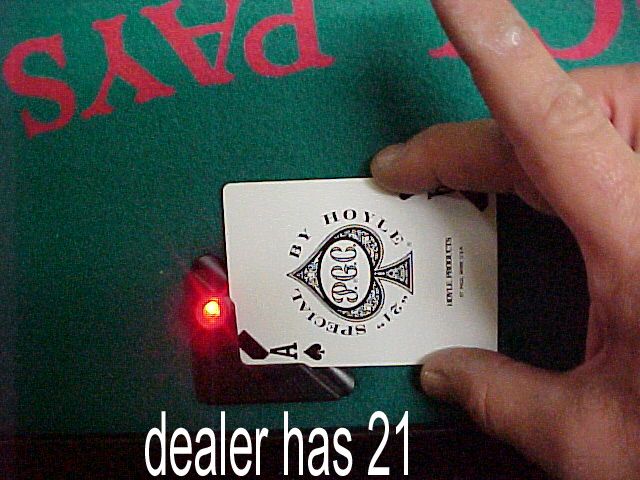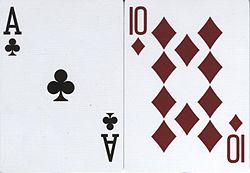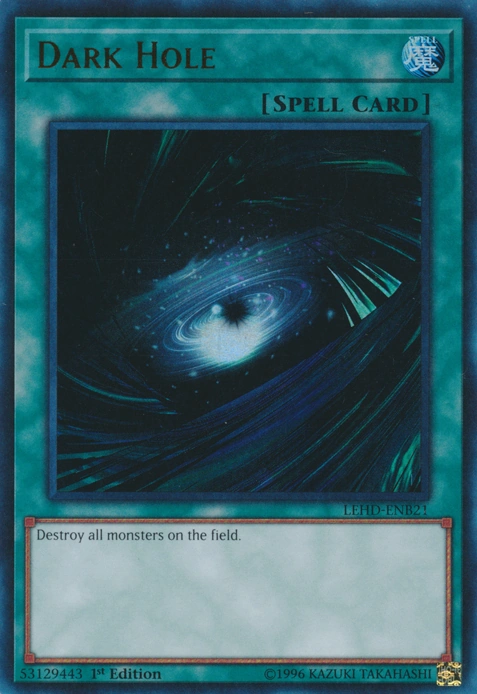No Hole Card Blackjack
|
No Hole Card Blackjack Card
NO-HOLE-CARD BLACKJACK
by Henry Tamburin
Blackjack Cards Play
Blackjack is a card game in which one of the dealer’s cards is hidden from the player until the final stage of the game. Knowing in advance what a dealer’s hole card is would be a huge advantage to the player. It should come as no surprise that some live blackjack players have perfected a technique known as hole. What is the ‘European no-Hole-Card Rule’? In a game of blackjack, the dealer typically will not look at his hole card until the players have completed their round. However, the European no-Hole-Card Rule. Two weeks ago I was playing blackjack in Germany where they also do not take a hole card. In this event the player loses the total bet if the dealer gets a blackjack, including the additional money bet after.
Henry Tamburin is the author of the 'Ultimate Blackjack Strategy Guide,' (www.888casino.com/blog/blackjack-strategy-guide/), editor of the Blackjack Insider Newsletter, and host of www.smartgaming.com. He also teaches blackjack and video poker courses in Las Vegas.

I often get ideas for my articles from questions posed by players. This was the case when a blackjack player emailed me this question: 'Do the odds change if the dealer doesn't receive his hole card until after all the players have completed their hands?'
First, let me briefly explain how the cards are dealt in blackjack. In U.S. casinos, the dealer will start a round of blackjack by dealing two cards in sequence to each player and two cards to herself. Before the players act on their hand, the dealer has both of her cards in front of her on the layout ─ one card is face up and the other is face down tucked under the face-up card (the face down card is also known as the dealer's hole card). If the dealer has an Ace face-up card, she will peek at her downcard, and if it's a ten, the dealer has blackjack and all players' wagers automatically lose, unless they, too, have a natural, in which case, it's a push. (In some casinos, the dealers will also peek at their hole card when their upcard is a ten-value card, but this is the exception rather than the rule.)
In many casinos outside the U.S., the dealer does not take her second card until after all the players have completed their hands. This is known as the 'no hole card' rule. Some players mistakenly believe that the casino gets an extra advantage when the dealer receives her second card after players complete their hands (i.e., they believe the dealer is less likely to bust when the cards are dealt consecutively, rather than when the dealer's second, and possible additional draw cards, are dealt after the players have drawn their cards). Mathematically, it makes no difference in the long run whether the dealer takes her second card before players act on their hand, or she waits and takes the second card after the players act. The no hole card, per se, has no effect on the odds of the game, or on the basic playing strategy (so if you hold a 16, you play it the same way regardless if the dealer has a hole card or not).
What does affect your odds and your playing strategy in no-hole-card games is when a player loses both wagers made on splitting and doubling when the dealer's second card gives her a blackjack. The latter is known as the European No Hole Card rule (abbreviated ENHC), and this does require a slight change in playing strategy.
To be clear, let me give you an example of what happens if you are dealt a pair of eights in a U.S. casino vs. a non-U.S. casino that has the ENHC rule. Suppose you're on U.S. soil, you wager $10, and are dealt a pair of eights with the dealer showing a ten. You follow the basic playing strategy and make another $10 wager and split the eights (yes, that's the correct play). You receive a picture card to one eight, and another picture card to the other eight, and you stand on both 18s. Your fellow table players complete their hands, and then the dealer turns over her downcard, which unfortunately is an Ace, giving her a blackjack. Her blackjack beats both of your 18s. However, the dealer takes only your initial $10 wager, and the second wager you made when you split is a push (you still own it). Your net loss on this hand is $10.
Now let's suppose you get that same hand in a casino that has the ENHC rule. After you split your eights, the dealer's second card is an Ace giving her a blackjack. In this case, you lose your initial $10 wager, and also the second $10 wager that you made when you split. Your net loss on the hand is $20. Get the picture?
The ENHC rule increases the house edge by about 0.11 percent (rule dependent). It also requires a modification to the basic playing strategy. The following table shows the strategy differences for a multi-deck ENHC game (dealer hits soft 17 and players can double after pair splitting), compared to an American game with the same rules (courtesy of Dan Pronovost; for details, see issue # 97 Blackjack Insider Newsletter at www.bjinsider.com). Essentially, the strategy changes occur when the dealer shows a 10 or Ace and include: hitting a hard 11 against a 10; hitting a pair of Aces against the Ace; and hitting a pair of eights against 10 and Ace.

American Rules | ENHC | ||||
Player Hand/Dealer Upcard | 10 | Ace | 10 | Ace | |
Hard 11 | Double | Hit | Hit | Hit | |
Ace-Ace | Split | Split | Split | Hit | |
8-8 | Split | Split | Hit | Hit | |
No Hole Card Blackjack

Blackjack Card Game
The above modification to the playing strategy for ENHC assumes surrender is not offered. If a casino has ENHC, and offers the players the option to surrender their hand when the dealer shows a ten upcard, then you should surrender 8-8 against a dealer 10 (rather than hit). (But that's not the only hand you should surrender vs 10. If you can surrender with the ENHC rule, you should also surrender all 14s, 15s, and 16s, whether pairs or not.)
Being able to surrender with ENHC is actually quite a favorable rule because you can surrender a poor hand even if the dealer winds up with blackjack. This surrender (known as early surrender) is quite different than the surrender offered in U.S. casinos where you can't surrender your hand if the dealer has a blackjack (remember in U.S. casinos, the dealer peeks, and if she has a blackjack, all the players' initial wagers on hands other than a natural automatically lose, and the round is over). Bottom line is that early surrender against a dealer 10 decreases the house edge by about 0.24 percent (rule dependent), which more than compensates for the slight increase in house edge caused by the ENHC rule. (Note: Besides being able to early surrender against a 10, some casinos will also allow you to early surrender against an Ace.)
To recap: it's no big deal if the rules don't allow the dealer to take a hole card, but it is a big deal if the casino takes both wagers on splits and doubles when the dealer has a blackjack. If the latter is the case, you need to modify your playing strategy (per the above table), and also take advantage of early surrender if it's allowed.

It doesn't matter which card the dealer takes. What is important is whether the player can lose more than their original wager if the dealer has a blackjack. For example, at Starnet casinos, if the dealer has a ten up, and the player has an 11 and doubles, then the dealer can draw an ace afterward, for a blackjack, and the player will lose both the original bet and the double. To adjust for this European no-peek rule, the player should be more conservative about doubling and splitting when the dealer has a potential blackjack.
For more information on the European no-hole-card rules, please see my European blackjack basic strategy.
No Hole Card Blackjack Cards
I just commented on this in my last newsletter. Two weeks ago I was playing blackjack in Germany where they also do not take a hole card. In this event the player loses the total bet if the dealer gets a blackjack, including the additional money bet after doubling or splitting. Basic strategy changes are to hit 11 against a 10, hit two 8's against a 10 or ace, and hit two aces against an ace.
I’ve been questioned about this several times and continue to maintain that despite losing the total bet the option to draw to split aces overcomes the European no-peek rule, thus splitting is the better play. Based on one deck the expected value of each hand (considering the possibility of a dealer blackjack) is -0.532849 for hitting and -0.223277 for splitting. So splitting is better by about 31% of a unit. Splitting is also better for the 4-deck game, which no Microgaming player should be playing since a 1-deck game with the same rules is available.
No Hole Card Blackjack Card Game
Thanks. Payout percentages such as this are historical. For example King Neptune's casino posts their June 2006 report on their web site. The 96.78% for table games means that in June 2006 the ratio of money returned to money bet was 96.78%. In other words an actual house edge of 3.22%. Your own results will depend on the game rules, your skill (in games of decision making), and luck. In most games the odds are quantifiable so payout reports are not useful. It shouldn't matter to you how badly other players have played or the mix of games they chose. Where these reports are very useful is in evaluating the slots. No casino that I know of volunteers how loose their slots are theoretically set, but such payout reports gives the user a good idea. If looking at other months you see that King Neptune's pays about 96% in slots. I also think it is a good sign of a good operation to have return percentages independently verified. It shows the casino has nothing to hide.